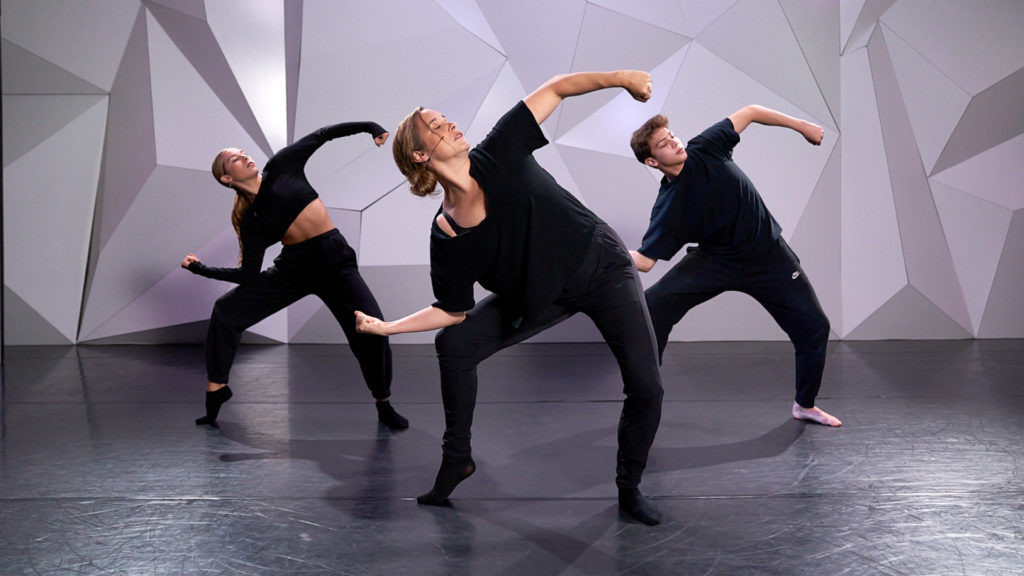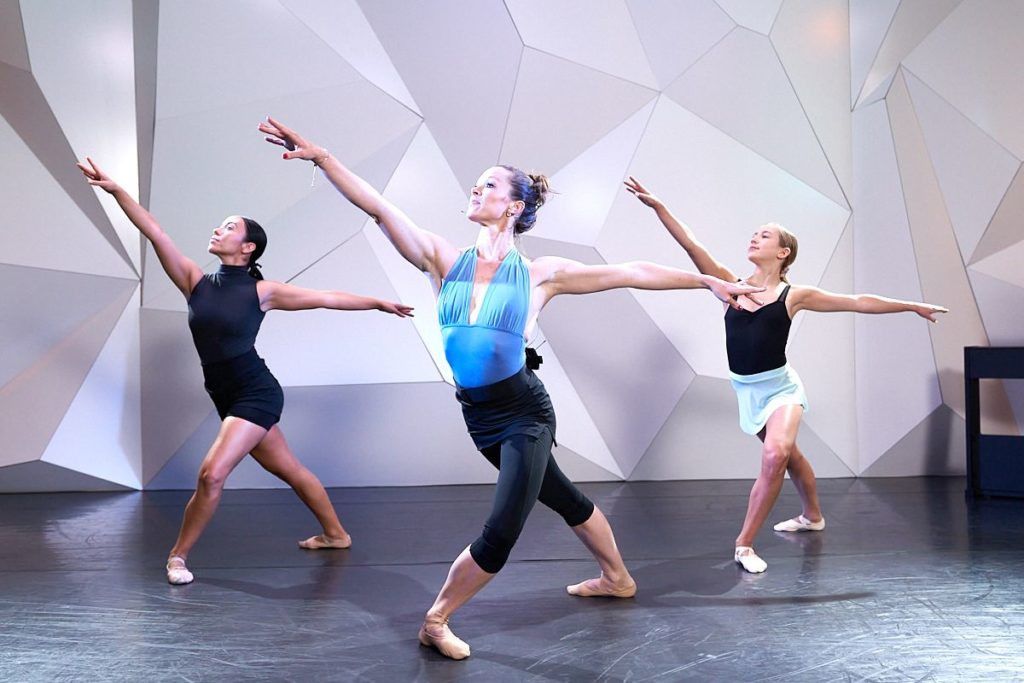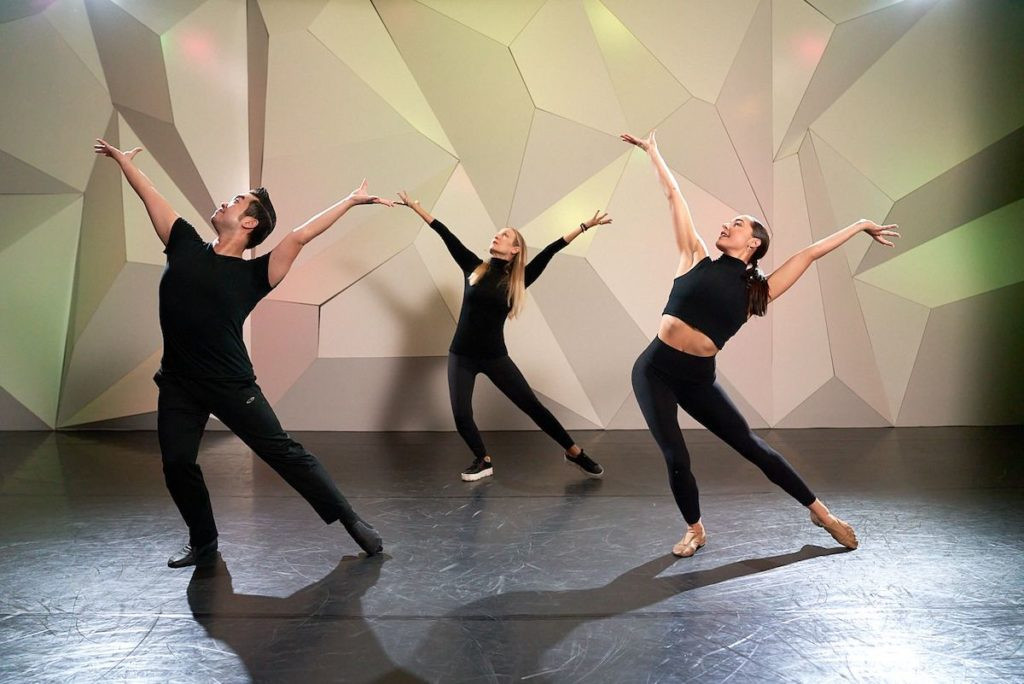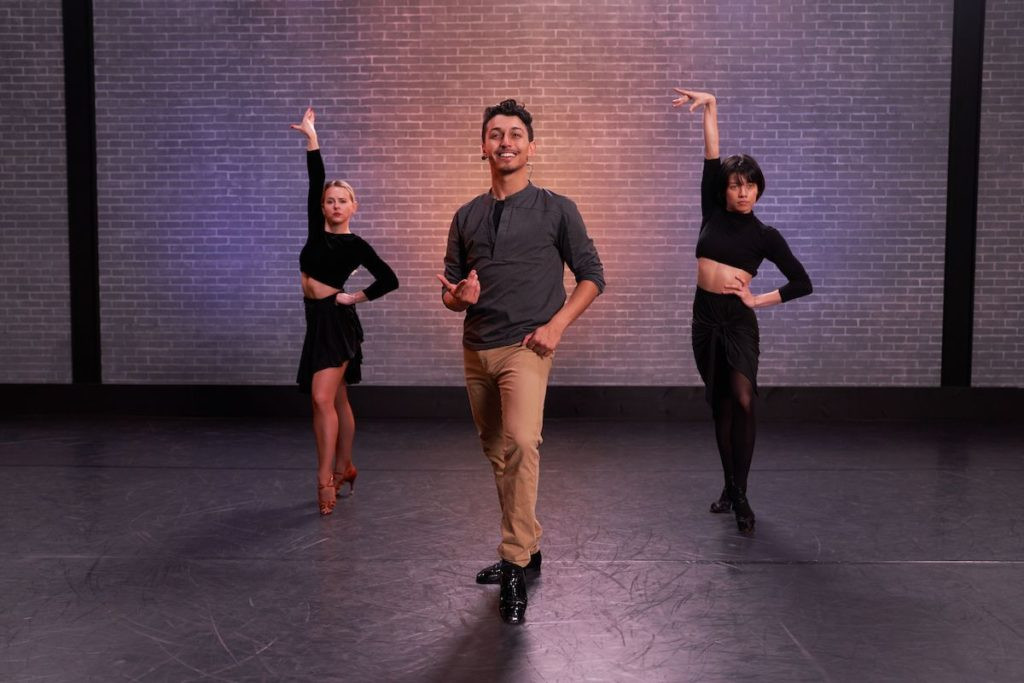Are you curious about the appropriate attire for dance class? What you wear to dance class significantly impacts your comfort, freedom of movement, and confidence, all of which are essential for an enjoyable experience. At ten-dance.com, we understand the importance of the right dancewear, offering guidance to help you choose outfits that enhance your performance and reflect your personal style. By selecting the right dance clothes, you’ll be ready to move, groove, and fully immerse yourself in the art of dance.
1. Why Is Choosing The Right Dance Attire Important?
Choosing the right dance attire is crucial for several reasons. It impacts comfort, freedom of movement, and confidence, all of which are essential for an enjoyable and productive dance class.
- Comfort and Freedom of Movement: The right dance clothes allow you to move freely without restriction.
- Confidence: When you feel good in what you’re wearing, your confidence shines through, enhancing your performance and overall experience.
- Technical Requirements: Different dance styles require specific types of clothing to showcase posture, alignment, and form.
2. What Are General Guidelines For Dance Class Attire?
When selecting what to wear to dance class, prioritize comfort and freedom of movement, as these elements significantly impact your overall experience and performance.
- Comfort is Key: Choose clothes that allow you to move freely and comfortably.
- Versatile Wardrobe: Items like T-shirts, tank tops, workout leggings, and sports bras are excellent choices.
- Layers: Consider wearing layers such as sweatpants, sweatshirts, or long-sleeved shirts that you can remove as you warm up.
3. What Should You Wear To Contemporary And Lyrical Dance Classes?
What should you wear to contemporary and lyrical dance classes? Contemporary dance blends elements of jazz, ballet, and lyrical styles. Therefore, your clothing should support a full range of motion and allow you to move without restrictions.
- Comfort First: Prioritize comfort to deepen your connection and intention in the dance.
- Fitted Clothing: Choose attire that is fitted but not overly restrictive.
- Layers: Use layers like sweatpants or long-sleeved shirts that can be removed as needed.
- Bare Feet or Dance Socks: Typically, dancers go barefoot or wear dance socks.
 Three lyrical dancers dressed in black, knees bent in a pose, looking to the right at cli studios, showcasing the fluidity and grace of the dance style.
Three lyrical dancers dressed in black, knees bent in a pose, looking to the right at cli studios, showcasing the fluidity and grace of the dance style.
4. What Is The Recommended Attire For Hip-Hop Dance Class?
What is the recommended attire for hip-hop dance class? Hip-hop dance provides an excellent opportunity to showcase your personality through clothing, with comfort being the top priority.
- Loose-Fitting Clothing: Opt for loose-fitting clothing that allows for ease of movement.
- Sneakers: Wear sneakers with less grip to facilitate spins, turns, and slides.
- Lightweight Fabrics: Choose lightweight sweats and T-shirts to prevent overheating.
 Dancer Ysabelle Capitule teaching at CLI Studios, wearing basketball shorts, a loose-fitting tshirt, and a baseball cap with her assistant in a sweatsuit, illustrating the casual and comfortable style appropriate for hip-hop dance class.
Dancer Ysabelle Capitule teaching at CLI Studios, wearing basketball shorts, a loose-fitting tshirt, and a baseball cap with her assistant in a sweatsuit, illustrating the casual and comfortable style appropriate for hip-hop dance class.
5. What Should You Wear To Ballet Dance Class?
What should you wear to ballet dance class? Ballet requires close attention to alignment, making tight-fitting clothing essential for instructors to assess your posture.
- Tight-Fitting Clothing: Leotards, tights, ballet skirts, and dance shorts are ideal for ballet.
- Warm-Ups: Use shrugs, leg warmers, or pants to keep muscles warm before class.
- Ballet Slippers: Confirm the appropriate shoe requirements with your studio.
According to research from the American Ballet Theatre, in July 2023, proper attire significantly enhances a dancer’s ability to execute precise movements and maintain correct posture.
 Choreographer Melissa Sandvig wearing a blue leotard and a black ballet skirt teaching ballet class, demonstrating the traditional and functional ballet attire.
Choreographer Melissa Sandvig wearing a blue leotard and a black ballet skirt teaching ballet class, demonstrating the traditional and functional ballet attire.
6. What Attire Is Suitable For Jazz Dance Class?
What attire is suitable for jazz dance class? Jazz dance is energetic and technical, emphasizing core strength and alignment, which means fitted clothing is beneficial.
- Fitted Clothing: Similar to ballet, fitted clothing helps showcase your posture.
- Jazz Shoes or Bare Feet: You’ll need jazz shoes or the option to dance barefoot.
- Versatile Options: Dance shorts and tights, fitted T-shirts, or sports bras and leggings are all suitable.
 Choreographer Marguerite Derricks and assistants wearing all black leggings and shirts in a jazz dance class, highlighting the uniformity and practicality of jazz dance attire.
Choreographer Marguerite Derricks and assistants wearing all black leggings and shirts in a jazz dance class, highlighting the uniformity and practicality of jazz dance attire.
7. What Should You Consider Wearing To Ballroom Dance Class?
What should you consider wearing to ballroom dance class? Ballroom dance focuses on precision and style, so lightweight and breathable clothing is crucial.
- Breathable Fabrics: Opt for lightweight and breathable fabrics to stay comfortable.
- Stylish Options: Consider flared or flowy dresses, skirts, or button-up shirts with slacks.
- Dance Shoes: Wear dress shoes or comfortable heels that you can dance safely in.
 Dancer Paul Karmiryan wearing slacks, a button-up, and dress-shoes while he teaches class with two female assistants in black skirts, crop tops, and heels, showcasing the elegance and poise of ballroom dance attire.
Dancer Paul Karmiryan wearing slacks, a button-up, and dress-shoes while he teaches class with two female assistants in black skirts, crop tops, and heels, showcasing the elegance and poise of ballroom dance attire.
8. How Does Dance Attire Affect Performance And Confidence?
Dance attire significantly affects performance and confidence by providing comfort, support, and freedom of movement, which are essential for dancers to perform their best.
- Psychological Impact: According to a study from Stanford University in 2022, dancers who feel good in their attire exhibit increased self-esteem and confidence, which translates into better performance.
- Physical Support: Proper dancewear, such as supportive sports bras and form-fitting attire, provides the necessary support to prevent injuries and allows dancers to maintain proper alignment.
- Expression and Style: Dance attire allows dancers to express their personal style and creativity, which can enhance their connection to the dance and boost their overall confidence.
9. Where Can You Find High-Quality Dance Attire?
Finding high-quality dance attire is essential for ensuring comfort, durability, and performance enhancement. Here’s a list of resources:
- Specialty Dancewear Stores: Retailers like Discount Dance Supply and Capezio offer a wide selection of dancewear, including leotards, tights, and shoes, catering to various dance styles.
- Online Marketplaces: Websites like Amazon and Etsy provide access to numerous vendors selling dance attire, allowing you to compare prices and styles easily.
- Local Dance Studios: Many dance studios have pro shops that sell dancewear, offering the convenience of trying items on and receiving expert advice from instructors.
10. How Can ten-dance.com Help You Find The Right Dance Attire And Classes?
Ten-dance.com can help you find the right dance attire and classes through our extensive resources, community connections, and expert guidance, making your dance journey seamless and enjoyable.
- Extensive Resources: Ten-dance.com offers a wide array of articles, guides, and tips on selecting the right dance attire for various styles, ensuring you’re always prepared.
- Community Connections: Connect with fellow dance enthusiasts in our vibrant community, where you can share experiences, ask questions, and get recommendations on attire and classes.
- Expert Guidance: Access expert advice from seasoned dancers and instructors who can help you choose the best attire and classes tailored to your needs and preferences.
Ready to find the perfect dance attire and classes? Explore ten-dance.com today and discover our extensive resources, connect with a vibrant community, and access expert guidance to enhance your dance journey. Start now and experience the joy of dancing with confidence and style.
11. How Do Different Dance Styles Influence Attire Choices?
Different dance styles significantly influence attire choices due to the unique movements, techniques, and performance requirements associated with each style.
- Ballet: Ballet dancers typically wear leotards and tights to allow instructors to assess their alignment and posture, essential for executing precise movements.
- Hip-Hop: Hip-hop dancers often opt for loose-fitting clothing like baggy pants, oversized t-shirts, and sneakers to accommodate the energetic and dynamic nature of the dance.
- Ballroom: Ballroom dancers may choose elegant attire such as dresses, skirts, or dress pants to reflect the formality and grace of the dance.
12. What Are The Benefits Of Wearing Appropriate Dance Shoes?
Wearing appropriate dance shoes provides numerous benefits, including enhanced performance, reduced risk of injury, and improved technique.
- Enhanced Performance: Dance shoes are designed with specific features, such as flexible soles and supportive heels, that allow dancers to execute movements with precision and control.
- Reduced Risk of Injury: Proper dance shoes provide cushioning, stability, and support, which help to minimize the risk of injuries such as sprains, strains, and blisters.
- Improved Technique: Dance shoes enable dancers to maintain proper alignment and balance, which is crucial for developing and refining their technique. According to a study from the Mayo Clinic in June 2024, appropriate dance footwear significantly reduces the risk of foot and ankle injuries by providing necessary support and cushioning.
13. What Are Some Common Mistakes To Avoid When Choosing Dance Attire?
Choosing dance attire can be challenging, and avoiding common mistakes can help ensure comfort, safety, and performance enhancement.
- Wearing Restrictive Clothing: Avoid clothing that restricts movement, such as tight jeans or stiff fabrics, as they can impede your ability to execute dance steps properly.
- Ignoring Studio Dress Codes: Be sure to check with your dance studio or instructor about specific dress codes or attire requirements to avoid feeling out of place or unprepared.
- Compromising on Quality: Invest in high-quality dance attire made from durable, breathable fabrics to ensure longevity, comfort, and support throughout your dance sessions.
14. How Does Climate Affect Dance Attire Choices?
Climate significantly affects dance attire choices by influencing the types of fabrics, layers, and accessories that dancers need to stay comfortable and perform their best.
- Hot Weather: In warm climates, dancers may opt for lightweight, breathable fabrics such as cotton or moisture-wicking materials to stay cool and dry during dance sessions.
- Cold Weather: In colder climates, dancers may choose to wear layers of clothing, such as leggings, sweaters, or leg warmers, to stay warm and prevent muscle stiffness before and after dancing.
- Indoor vs. Outdoor: The climate inside a dance studio or performance venue can also impact attire choices, with dancers adjusting their clothing based on temperature and humidity levels.
15. How To Care For Your Dance Attire To Prolong Its Life?
Proper care for your dance attire is essential to prolong its life, maintain its quality, and ensure it continues to provide the comfort and support you need.
- Follow Washing Instructions: Always follow the washing instructions on the garment label to prevent damage, shrinkage, or discoloration.
- Hand Wash or Use Gentle Cycle: Consider hand washing delicate items such as leotards, tights, or tutus, or use a gentle cycle on your washing machine to minimize wear and tear.
- Air Dry Whenever Possible: Avoid using a dryer, as high heat can damage elastic fibers and cause shrinkage. Instead, air dry your dance attire on a drying rack or clothesline away from direct sunlight.
16. How Important Is Personal Expression In Dance Attire?
Personal expression is highly important in dance attire, allowing dancers to showcase their individuality, style, and connection to the dance form.
- Enhancing Creativity: Dance attire serves as a canvas for personal expression, enabling dancers to convey emotions, tell stories, and express themselves creatively through their clothing choices.
- Boosting Confidence: When dancers feel good in what they’re wearing, their confidence shines through, enhancing their performance and overall experience.
- Celebrating Diversity: Personal expression in dance attire celebrates diversity by allowing dancers to embrace their unique identities, backgrounds, and perspectives, enriching the dance community as a whole.
17. What Accessories Complement Different Dance Styles?
Various accessories complement different dance styles, enhancing both the aesthetic appeal and functional aspects of dancers’ attire.
- Ballet: Ballet dancers often wear accessories such as hairpins, headbands, and ribbons to keep their hair neatly styled and out of their faces while performing.
- Hip-Hop: Hip-hop dancers may accessorize with hats, bandanas, jewelry, and sneakers to express their individuality and style, adding flair to their movements.
- Ballroom: Ballroom dancers may use accessories such as gloves, fans, and elegant jewelry to enhance the glamour and sophistication of their attire, complementing their performance.
18. How To Choose Dance Attire That Supports Injury Prevention?
Choosing dance attire that supports injury prevention is essential for dancers of all levels, helping to minimize the risk of strains, sprains, and other common dance-related injuries.
- Compression Wear: Consider wearing compression garments, such as leggings or socks, to improve circulation, reduce muscle fatigue, and provide support to vulnerable joints.
- Supportive Footwear: Invest in dance shoes that offer adequate cushioning, arch support, and stability to protect your feet and ankles from impact and stress.
- Breathable Fabrics: Opt for dance attire made from breathable, moisture-wicking fabrics to keep your body cool and dry, preventing overheating and reducing the risk of muscle cramps.
19. How To Transition Your Dance Attire From Class To Casual Wear?
Transitioning your dance attire from class to casual wear is a practical way to maximize your wardrobe and showcase your love for dance beyond the studio.
- Layering: Layer your dance attire with casual pieces such as denim jackets, cardigans, or oversized sweaters to create stylish, everyday looks that reflect your personal style.
- Accessorizing: Add accessories such as scarves, hats, jewelry, and belts to dress up your dance attire and make it suitable for various occasions, from brunch with friends to running errands.
- Mixing and Matching: Experiment with mixing and matching your dance attire with other items in your closet to create unique, versatile outfits that blend comfort, functionality, and fashion.
20. What Are The Latest Trends In Dance Attire?
Staying up-to-date with the latest trends in dance attire can help you express your personal style, enhance your performance, and feel confident in the studio or on stage.
- Sustainable Fabrics: Eco-friendly dance attire made from sustainable materials such as organic cotton, bamboo, or recycled fibers is gaining popularity as dancers prioritize environmental responsibility.
- Athleisure-Inspired Designs: Dance attire that combines athletic functionality with streetwear aesthetics is trending, offering comfort, style, and versatility for both dance and everyday wear.
- Customizable Options: Customizable dance attire that allows dancers to personalize their clothing with unique colors, patterns, and embellishments is becoming increasingly sought after, enabling dancers to express their individuality and creativity.
By understanding these trends and principles, dancers can make informed choices about their attire, ensuring they are comfortable, confident, and ready to excel in their chosen dance style. Remember to visit ten-dance.com for more tips, resources, and guidance on all things dance.
FAQ: What Do You Wear To Dance Class?
1. What is the most important factor to consider when choosing dance attire?
Comfort and freedom of movement are paramount, allowing you to fully engage in the dance without restrictions.
2. Can I wear regular workout clothes to a dance class?
Yes, clothing like T-shirts, tank tops, workout leggings, and sports bras are generally suitable for many dance styles.
3. How important is it to wear fitted clothing to ballet class?
Fitted clothing is essential in ballet as it allows the instructor to assess your posture and alignment accurately.
4. What type of shoes should I wear to hip-hop dance class?
Sneakers with less grip on the soles are ideal for hip-hop, allowing you to spin, turn, and slide easily.
5. Should I wear layers to dance class?
Yes, wearing layers is a good idea as you can remove them as you warm up, maintaining a comfortable body temperature.
6. What kind of fabrics are best for dance attire?
Lightweight, breathable fabrics like cotton, spandex, or moisture-wicking materials are excellent choices.
7. Is it necessary to buy expensive dance attire?
No, you don’t need to buy expensive attire. Prioritize comfort and functionality over brand names.
8. How do I care for my dance attire to make it last longer?
Follow the washing instructions on the label, use a gentle cycle, and air dry your clothes to prolong their life.
9. Can I express my personal style through dance attire?
Absolutely! Dance attire is a great way to showcase your individuality and creativity.
10. Are there any specific dress code rules I should be aware of?
Always check with your dance studio or instructor about any specific dress code requirements before attending class.
Ready to find the perfect dance attire and classes? Explore ten-dance.com today and discover our extensive resources, connect with a vibrant community, and access expert guidance to enhance your dance journey.
Address: 60 Lincoln Center Plaza, New York, NY 10023, United States.
Phone: +1 (212) 769-7000.
Website: ten-dance.com.
